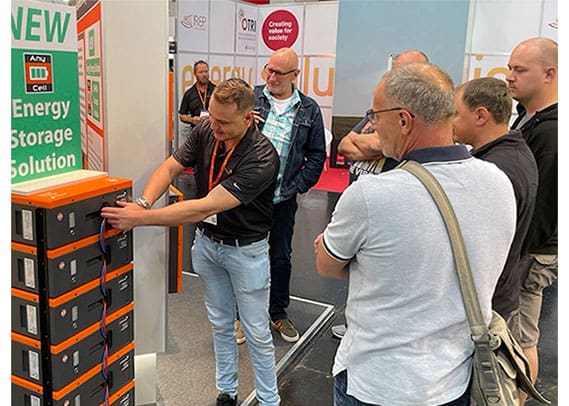
Solar Introduces Stable Power, Bringing Economic Advantages to Remote Communities (Off-Grid or Edge of Grid)
In western civilizations people are used to having electricity. It is the most normal thing in the world to plug a device into the wall outlet and the device is powered. This is a common standard like turning on tap water. It is always there. Most people are not aware of the effort and infrastructure working behind this “normality” and how easy access to electricity contributes to their daily lives and comforts. Many do not think to value the opportunities they can take advantage of because of their easy access to stable electricity. Access to energy is the foundation for health, education, prosperity and therefor for sustainable socioeconomic growth.
Changing the perspective, the opportunities electricity can bring to people that don´t have access to it, is an entirely different story. Having no power is normal for millions globally. As an example, many of this segment of the population make their income with grain, produce, and livestock farming for self-supply, using the resources they have. The world in the 21st century is driven by economical systems, based on continuous growth. Much of that growth is stimulated by technology and efficiency. This means people who have no electricity are left behind, as they are missing the opportunities reliable electricity provides. They often live in poverty without the chance to keep up or get ahead, often making a living in a kind of a survival mode. Natural disasters like droughts are also a big risk, which in the example above, can destroy harvest yields and therefore their basis of existence.

The necessity to “power” those people is clear. The question is how can this be achieved, and which technology or technology mix can have the highest impact? Building traditional, centralized power supply infrastructures, means new utility grids and conventional coal, gas, or nuclear power plants. These options can be too expensive, take much too long to build, and are not sustainable, as we have learned from the past. It is clear, the key is to enable people, communities, and businesses to be their own energy supplier with decentralized energy generation and distribution facilities.
Battery-based, stand-alone photovoltaic (PV) systems have proven for decades, to be one of the most promising technologies to electrify remote villages. When well-designed PV systems are used to generate electricity to create economic opportunity, the initial investment costs are recovered within a relatively short period of time without further costs per generated kWh. The energy itself is sustainable, freely provided from the sun, once the system is paid for.
For agricultural applications, farmers can run solar powered DC water pumps to ensure higher harvest rates for crops like grain and fruits, as well as livestock. Farmers can even harvest during droughts. With reliable electricity, they will have options to improve their efficiency. For example, speeding up grain processing by using electrical mills. Beyond, food retailers will not waste fresh foodstuffs any longer, with the addition of uninterrupted cooling chains. Electricity can provide access to reliable water, introduce new appliances or equipment, and generally add efficiency in the business owner’s processes, returning higher yields than they have ever experienced. The farmer then sells their products in the local market. The same land will offer much higher returns as their businesses grow with the addition of sustainable energy.
For perspective, in Germany, the landscape of energy supplied to the public on average has 19min per year of interruption. Meaning, for 19 minutes, there is no access to electricity. In other parts of the world, there are weak national utility grids. For those areas, there is a lack of generation capacity to cover a complete region with power all day long. The electrical generation and demand are out of balance. Conditions can be so out of balance that some regions require load shedding. This means different areas of one utility grid cluster will only have power at different times of the day. It is common to be without power for hours at a time on a daily basis. Sometimes this is scheduled and sometimes it is not. This chaos slows productivity down with devastating results, impacting the potential yield of the business owner. However, it also impacts the economic growth of the community. With less yield for example, that creates less jobs that could impact an individual that would have had a stable income for their family.
In these common global conditions, additional battery-based PV power stations, connected to the utility grid can bridge these outages. The solar system coupled with a hybrid inverter provides stability. The best news is this solution works logistically, but also makes sense economically. Businesses can experience a short return on investment of the initial costs in this type of application, due to the ability to generate higher turnover of their product, with more independence from the national utility grid.
From a socioeconomic point of view, having stable electricity allows children and students to study at night and lets them learn about technologies, engineering, business management, medicine, law, finance, handcrafting etc. They can then learn how to use the tools to increase productivity, quality of life and therefore enabling them to achieve health and prosperity. Better educated children will impact the future economic possibilities for individuals, for their families and for their communities. Having access to efficient appliances and reliable electricity can also bridge the gender gap for women to have more opportunities where traditionally they would have no option to provide for their families or become entrepreneurs.
The technical solutions exist, providing great opportunities and benefits to the global populations, but there are still high hurdles to overcome. The biggest obstacle is the lack of access to finance and resources for the masses in the developing world. Conditions are changing, with new options coming to the market to make access to solutions possible. It will be a great goal for communities without access to reliable power, to reverse their conditions. They can then realize the foundation for health, education, prosperity, and sustainable socioeconomic growth.
Phocos aims to contribute, to enable energy access with the Any-Grid™ Hybrid Inverter (PSW-H)
- Flexible – thanks to outstanding features
- Reliable – thanks to the highest quality standards and premium technical support
- Affordable – thanks to an excellent price-performance ratio












